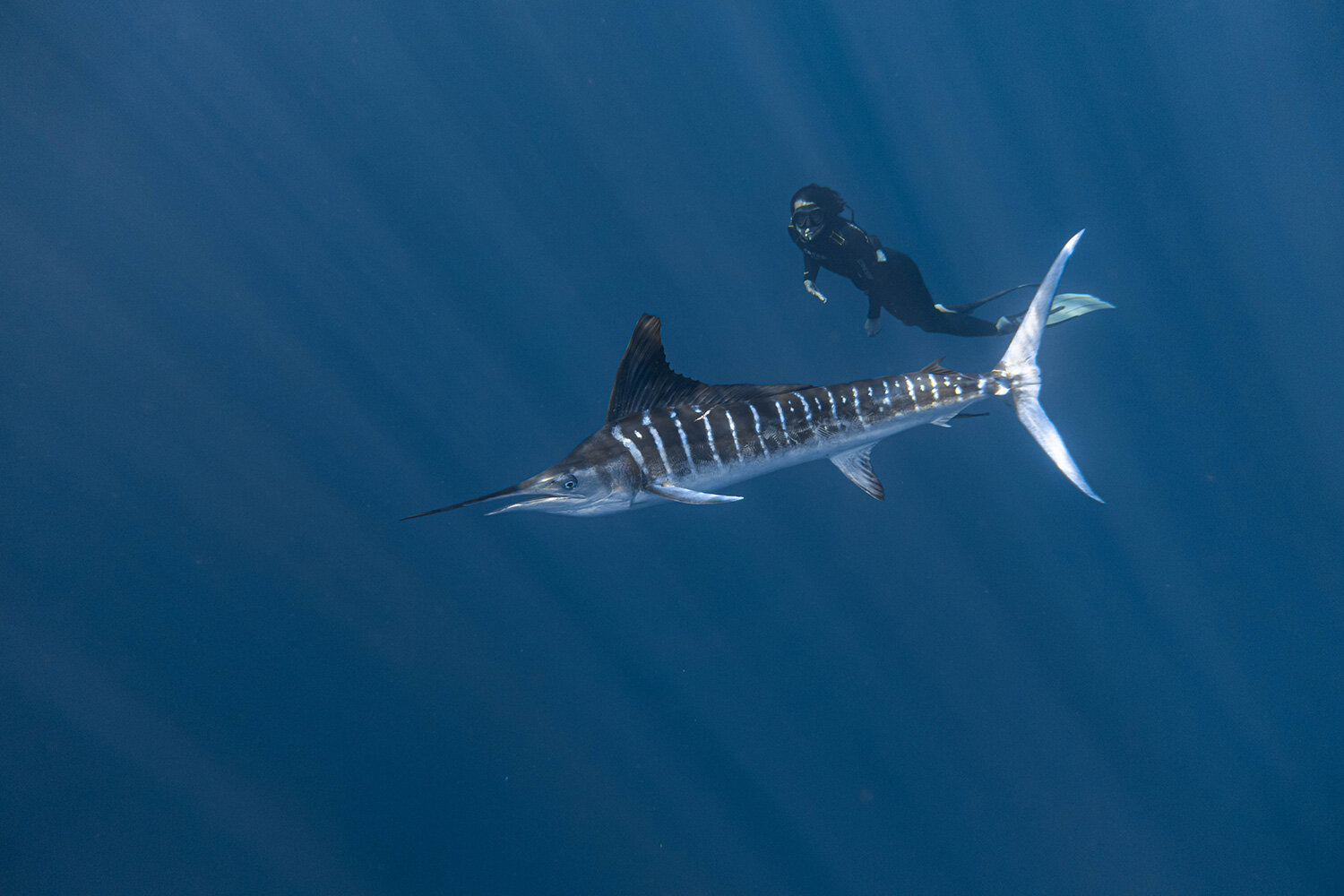Marlin Expedition: Witness one of Baja’s best-kept secrets
In Baja California, we are privileged to enjoy some of the most biodiverse waters in the world, with a never-ending variety of marine life. And we’re lucky also to have some of the most incredible ocean action right on our doorstep.
When summer’s coming to an end, we start gearing up for our action-packed Marlin Safaris in November. Join us to witness one of the most unforgettable displays that nature has to offer.
And this magical spectacle all starts with the humble sardine.
Bait balls
Pacific sardines are a crucial component of the Baja food chain. They feed on plankton and serve as food for pelagic fish, birds, and ocean mammals.
Every year, millions of sardines pass through Bahia Magdalena in what is said to be the world’s second-biggest sardine run (after South Africa).
The seasonal abundance of food attracts these baitfish. And when they gather, they, in turn, draw all the ocean predators in a frenzied feeding migration.
In the open ocean, the fish have nowhere to hide. The predators herd the fish from above and below, and they group into tight balls as a last resort form of protection. Watching the bait ball of thousands of fish move as one in the ocean, their silvery scales glistening in the water, is a mesmerizing spectacle.
These bait balls attract a wide range of predators, both in the water and from the air. The first thing we spot is the frigate birds gathering on the surface, a tell-tale sign of the battle for survival that’s going on in the water.
Underneath the surface, dolphins, sea lions, and sometimes whales and orcas are all attracted by the bait balls, hoping to get their share of the fishy feast.
The Striped Marlin
Here are a few facts about the strikingly beautiful Striped Marlin (Kajikia audax):
Maximum speed: at 80km/h, they are one of the ocean’s fastest predators.
Size: up to 4m in length, they can weigh up to 200kg.
Class: the Striped Marlin is a member of the billfish family that gets their name from the “bill” or long round beak that protrudes from their upper jaw like a sword.
Appearance: the characteristic light blue stripes that line the side of their body gives them their name.
Migration: they’re a highly migratory species that hunts during the day near the surface of the open ocean. Their migration pattern is similar to a horseshoe shape, between Japan, California down to Chile, then towards Australia.
IUCN red list conservation status: Near Threatened, with a decreasing population trend. This means that they are likely to become endangered in the near future if they are not protected.
Marlins are usually solitary predators, but they work together to make the most of this ocean feast.
They communicate with each other by flashing their bright stripes, working as a team to corral the fish into tighter bait balls. Then they make the most of their impressive speed to dart at the ball and use their long bills to stun or sometimes even spear their prey, which they can then easily consume.
Conservation status
Because of their size and beauty, Striped Marlins are a favorite with sport fishers and are often caught as bycatch by industrial fishing boats.
Like other migratory species, it can be challenging to establish protection for them. They cross into the waters of many different countries on their migratory travels through the year and might not have the same protection everywhere.
By giving them value through sustainable tourism activities like our safaris, we contribute to conservation efforts by showing that they are worth more alive than as fishing products for commercial and recreational fishing.





